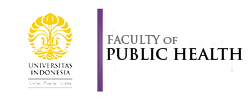Kajian Hubungan Antara Iklim Keselamatan Psikososial (Psychosocial Safety Climate) dengan Perundungan di Tempat Kerja (Workplace Bullying) di PT.WID
Abstract
Keywords
References
Akella, D. (2016). Workplace Bullying: Not A Manager’s Right? Journal of Workplace Right., 1-10.
Alterman, T., S.E., L., Dahlhamer, J., W. B., & Calvert, G. (2012). .Job insecurity, work family imbalance and hostile work environment: prevalence data from the 2010 National Health Interview Survey. Am J Ind Med.
Arenas, A., Giorgi, G., Montani, F., Mancuso, S., Perez, J. F., Mucci, N., & Arcangeli, G. (2016). Workplace Bullying in a Sample of Italian and Spanish Employees and Its Relationship with Job Satisfaction, and Psychological Well-Being. Frontiers in Psychology., 6(1912), 1-10.
Bond, S. A., Tuckey, M. R., & Dollard, M. F. (2010). Psychosocial Safety Climate, Workplace Bullying and Symptomps of Posttraumatic Stress. Organization Development Journal, 28(1), 37.
Cheyne, A., Cox, S., Oliver, A., & Tomás, J. (1998). Modelling safety climate in the predictions of levels of safety activity. Work & Stress, 12, 255-271.
Commons, C. (2010). The Australian workplace barometer: Report on Psychosocial safety climate and worker health in Australia. Australia: safeworkaustralia.
Cooper, C., & Robertson, I. (2001). Well-being in organization. England: John Wiley&Sons, Ltd.
Demerouti, E., Bakker, A., Nachreiner, F., & Schaufeli, W. (2001). The job demands–resources model of burnout. Journal of Applied Psychology, 86, 499–512.
Dollard, M. F., & Bakker, A. B. (2010). Psychosocial safety climate as aprecursor to conducivework environments, psychological health problems, and employee engagement. Journal of Occupational and Organizational Psychology, 579-599.
Dollard, M. F., Tuckey, M. R., & Dormann, C. (2012). Psychosocial safety climate moderates the job demand-resource interaction in predicting workgroup distress. Accident Analysis and Prevention, 45, 694–704.
Dollard, M., & Kang, S. (2007). Psychosocial Safety Culture and Climate survey. Adelaide: University of South Australia.
Einarsen, S., & Skogstad, A. (1996). Bullying at work: Epidemiological findings in public and private organizations. European Journal of Work and Organizational Psychology, 5(2), 185-201.
Einarsen, S., Hoel, H., Zapf, D., & Cooper, C. (2011). The concept of bullying and harassment at work: The European tradition. Developments in Theory, Research, and Practice, Second Edition. In S. Einarsen, H. Hoel, D. Zapf, & C. Cooper (Eds.), Bullying and harrasment in the workplace (pp. 3-23). CRC Press.
Erwandi, D., Kadir, A., & Lestari, F. (2021). Identification of Workplace Bullying: Reliability and Validity of Indonesian Version of the Negative Acts Questionnaire-Revised (NAQ-R). International Journal of Environmental Research and Public Health, 18(3985).
Hall, G. B., Dollard, M. F., & Coward, J. (2010). Psychosocial Safety Climate: Development of the PSC-12. International Journal of Stress Management, 17, 353–383.
Hall, G. B., Dollard, M. F., & Coward, J. (2010). Psychosocial Safety Climate: Development of the PSC-12. International Journal of Stress Management, 17(4), 353-383.
Hidayati, L. (2016). PEMBULIAN DI TEMPAT KERJA DALAM KONTEKS ASIA- Workplace Bullying in Asia Context. Malang: Seminar Nasional dan Gelar Produk | SENASPRO .
Idris, M. A., Dollard, M. F., Coward, J., & Dormann, C. (2012). Psychosocial safety climate: Conceptual distinctiveness and effect on job demands and worker psychological health. Safety Science, 50, 19-28.
Jaafar, M., & Hiidzir, N. I. (2016). Factors of Sub-Contractor Workplace Bullying in the Construction Industry. Research Journal of Fisheries and Hydrobiology, 11(3), 255-260.
Jordon, J., Gurr, E., Tinline, G., Giga, S., Faragher, B., & Cooper, C. L. (2003). Beacons of excellence in stress prevention. Manchester, UK: Robertson Cooper and UMIST.
Karabuluta, A. T. (2016). Bullying: harmful and hidden behavior in organizations . Procedia - Social and Behavioral Sciences , 229, 4-11.
Kompier, M., & Cooper, C. L. (1999). Preventing stress, improving productivity: European case studies in the workplace. London, UK: Routledge.
Kompier, M., & Kristensen, T. S. (2001). Organizational work stress interventions in a theoretical, methodological and practical context. In Stress in the workplace: Past, present and future (pp. 164-190). London, UK: Whurr.
Law, R., Dollard, M. F., Tuckey, M. R., & Dormann, C. (2011). Psychosocial safety climate as a lead indicator of workplace bullying and harassment, job resources, psychological health and employee engagement. Accident Analysis and Prevention, 43, 1782-1793.
Moleong, L. J. (2018). Metodologi penelitian kualitatif. Bandung: PT Remaja Rosdakarya.
Munandar, A. S. (2001). Psikologi Industri dan Organisasi. Jakarta: UI Press.
Robbins, S. (2003). Organizational Behavior (10th ed.). New Jersey: Pearson Ueducation Inc.
Salin, D. (2014). Risk factors of workplace bullying for men and women: The role of the psychosocial and physical work environment. . Scandinavian Journal of Psychology.
Sansone, R. A., & Sansone, L. A. (2015). WORKPLACE BULLYING: A Tale of Adverse Consequences. Innovations in CLINICAL NEUROSCIENCE, 12, 32-37.
Schaufeli, W., & Bakker, A. B. (2004). Job demands, job resources and their relationship with burnout and engagement: a multi-sample study. Journal of Organization Behavior, 34, 1-15.
Silviandari, I. A., & A. F. Helmi. (2018). Bullying di Tempat Kerja di Indonesia - Workplace Bullying on Indonesia. Buletin Psikologi, 26 (2), 137-145.
Work, E. A. (2012). Annual Report 2012 – Summary. Luxembourg: Publications Office of the European Union.
Yahaya, A., Ing, T. C., Lee, G. M., Yahaya, N., Boon, Y., Hashim, S., & Taa, S. (2012). The Impact of Workplace Bullying on Work Performance. Archives Des Sciences, 65(4), 18-28.
Yeun, Y. R., & Han, J. W. (2016). Effect of Nurses’ Organizational Culture, Workplace Bullying and Work Burnout on Turnover Intention. International Journal of Bio-Science and Bio-Technology, 8(1), 372-380.
Zohar, D. (1980). Safety climate in industrial organizations: Theoretical and applied implications. Journal of Applied Psychology, 65, 96-102.
DOI: 10.59230/njohs.v2i1.5264
Refbacks
- There are currently no refbacks.







.png)
